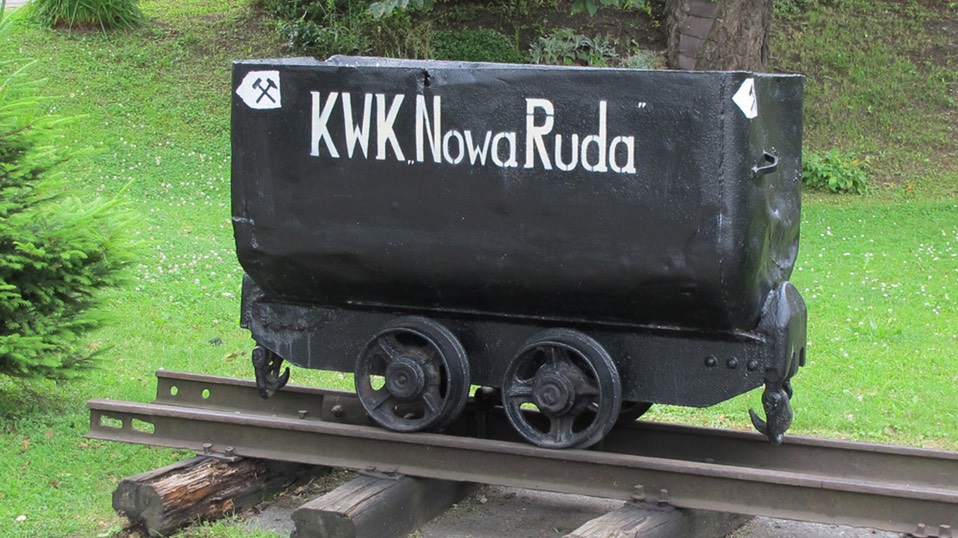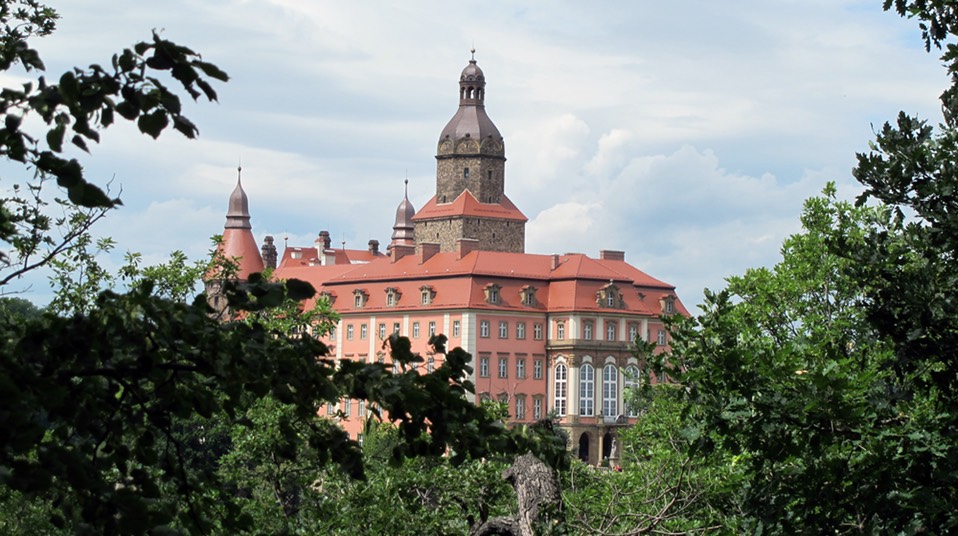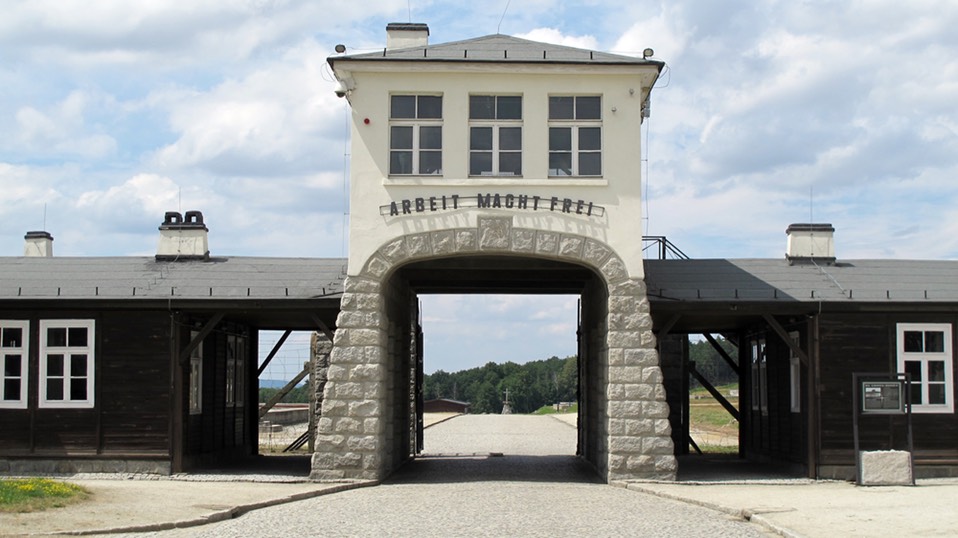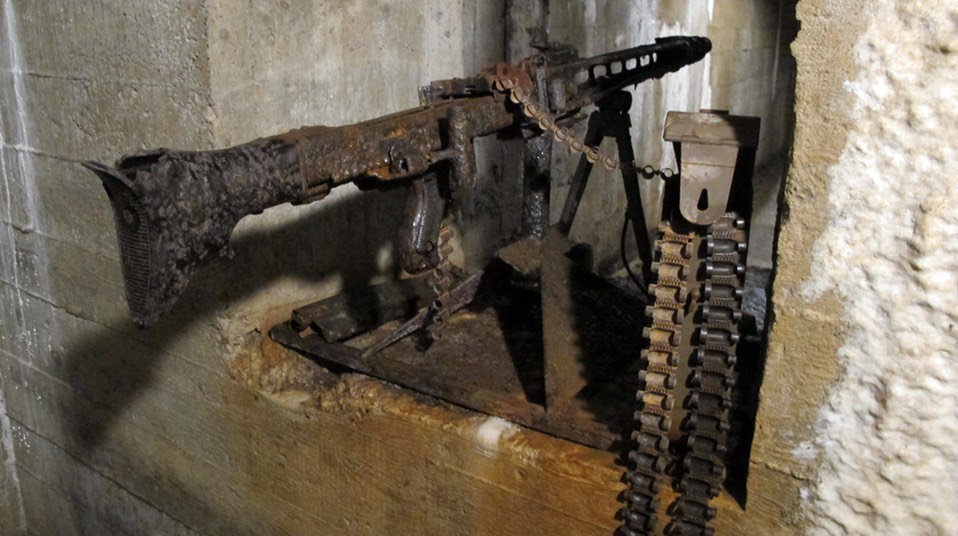10th - 16th July 2017
Monday
This is the start of a second week at Agroturystyka & Camping Forteca, we had been planning to move on today but there are still places we want to go, things we want to do so we’ve decided to stay a few more days.
The first of those places was the Mining Museum Nowa Ruda. We could have taken the easy way and gone by car but we were advised that the train journey was the best way to go, one of the most scenic in Poland.
We took the car to Walbrzych railway station where we left the car and walked into the station. The station was a bit of a surprise in that it did not appear to be operating, every thing - booking office, toilets, cafe - was closed and appeared to have been for some time. However wandering onto the platform area there was a new looking train waiting on platform 2, we were assured by a fellow passenger that the train went to Nowa Ruda (Przedmiescie) so we climbed aboard and exactly at the advertised time the train left and headed south. We were comforted to see that just above where we sat was an electronic destination board that announced the next station and the ones following, we had eleven stations to go. Stopping at the first station, we were amazed - total dereliction. All the buildings were in a state of collapse and surrounded by wire, and we could not decide on which side the platform was. This scenario was repeated for each station until we reached our stop and the question of which side to alight was solved by the need to press a green button to open the door. One side only was lit. We opened the door and jumped down, looking up and down we could not see how to exit the train stop (it could not be called a station) so waited until the train left to enable us to look all around. Still no clue. Continuing the hunt we found a set of steps, in an extreme state of decay leading off the railway embankment. At the bottom of the steps was a track that gradually widened to become a road and at the bottom of the road - the Nowa Ruda Coal Mine.

Like many of the attractions here about it was guided tour only, but the ticket office said they had a tour we could join leaving in a half hour and explaining, that the tour was in Polish only, provided us with audio commentary gizmos. As the visitors were assembling the guy who sold us the tickets came out of his office and introduced us, in English, to the guide who apologised for not being able to give an English commentary but assured us he would do his best to answer any question we might have.
The trip round the mine was fascinating, no room here for Mr Elf and Mrs Safety. The mine seemed pretty much as it must have done the day it closed, there seemed to be no desire to change it for the comfort of visitors and the only concession to safety was a chap dressed as a miner from days past who would jump out of the darkness and frighten the life out of you, but whose task it soon became clear was to keep a head count and make sure no one strayed into side tunnels or got separated from the main group.
Exiting the mine was done by train, no tourist mock-up this, it was an original train on original track. It was dark, it was very uncomfortable, it felt dangerous but it was a great end to a very good tour.
The train ride back to Walbrzych was again on a new modern train, it left Nowa Ruda (Przedmiescie) exactly as per timetable and it arrived on time at Walbrzych. From the build-up given we were expecting a more scenic route than we got but it was a pleasant journey we are very pleased to have taken.
Wednesday
The weather was so bad yesterday we were glad to get out and about today, to visit the third largest castle in Poland, Ksiaz Castle. Owned by the wealthy family of Hochbergfrom 1509 to 1941 its last, and probably, most famous occupant was Princess Daisy of Pless. Born Mary Theresa Olivia Cornwallis-West. Famous not only because of her beauty and lineage but also her work for wounded soldiers at the front during the Great War and charity work in the town of Walbrzych, such as the construction of an orphanage, hospital and help for working mothers.

Ksiaz Castle.
The castle was seized by the Nazi regime in 1944 because the Prince of Pless Hans Heinrich XVII had moved to England in 1932 and become a British citizen; also his brother Count Alexander of Hochberg who was a Polish citizen and the owner of Schloss Pleß (today Pszczyna Castle), had joined the Polish army. Ksiaz castle was a part of the Project Riese until 1945 when it was occupied by the Red Army. Countless artefacts were stolen or destroyed by the Soviets.
Ksiaz Castle is set in extensive parklands from where all the sections of the palace e.g. the mausoleum (closed when we tried to visit) and the Palm House can be reached by foot. We went to the Palm House but as it was a 6km round trip at the end of a long day we went in the car. It was a worth while visit to a place that has changed little over the years and where we were able to see pomegranates growing on the trees, as it’s always the wrong season when we are in Spain/Portugal.
Friday
There were many concentration/forced labour/death camps in Poland and today we visited Gross Rosen, not a name familiar to us in the UK but at its peak activity in 1944, the Gross-Rosen complex had up to 100 subcamps located in eastern Germany, Czechoslovakia, and on the territory of occupied Poland. The population of all Gross-Rosen camps at that time accounted for 11% of the total number of inmates incarcerated in the Nazi concentration camp system. The forced labour camp near the village of Gross Rossen was built to exploit the nearby granite quarry, the work was so tough and the rations and living quarters so poor the workers survived an average of five weeks.

Work Makes Free - Gross Rosen Entrance.
Saturday
We are hoping that today we are going to learn something about Projekt Riese (Giant Project) a large scale secret construction project, which gained world attention a couple of years ago (2015) with the news of the discovery, by an amateur treasure hunter, of an armoured train. Radar images showed clearly something hidden the mountain at km marker 61.1 of the railway from Wroclaw to Walbrzych. Speculation ran rife that it involved military equipment or Jewish gold and jewellery or even perhaps the contents of the Amber Room in St Petersburg. In 2016 further investigation revealed natural ice formations that could have been mistaken for train and tunnel. Little is known about the Projekt Riese, it was a secret project after all, but there are several places where parts of the project can be viewed, the most publicised is at Ksiaz Castle which, apparently, was to be the surface state rooms for Hitler and his entourage. We were told by the ticket office there that unless we had a good understanding of the Polish language we should not venture down to the tunnels at that point but this morning we were heading for Osowka where we were told English audio guides were available.

Riese Project - abandoned gun.
Just a few kilometres short of Osowka we noticed just off the road a small carpark with set up at the entrance a V2 Rocket. We broke our journey and went for a look see. It was another section of tunnels that formed part of Projekt Riese known as Sztolnie Walimskie and they had English audio guides so with a tour starting in just five minutes we paid our money and joined the group. It is unknown exactly what this section (like many other sections) was built for but full sized models of both V1 and a V2 Flying Bombs were found here. It is not thought they were built here and the range to the targets was too great for them to be fired from here but other artefacts found leads researches to believe that electronic components were manufactured here. During the tour there were several light/audio presentations that demonstrated life and conditions here. After the tour I noticed on a fast food stall outside a Polish snack I had not seen before so tried it. It was a thick slice of crusty bread with dripping thickly spread on it and topped with a pickled gherkin, absolutely delicious, it took me straight back to my childhood in the days before food police.
Also on the tour was an English chap on a “city weekend break” he was going on to Osowka, as were we but he planned to take a taxi so we offered him a lift.
The section of Projekt Riese tunnels at Osowka was in some ways more impressive than the previous at Sztolnie Walimskie in that they were much larger cathedral like caverns tunnelled out and concrete lined by slave labour, places where thousands could have lived safely with absolutely no fear from bombing, either conventional or nuclear that the allies suspected the Germans were developing. It was a good thought provoking tour that finished with a one minute silence in memory of the thousands who died working as slaves on the project.